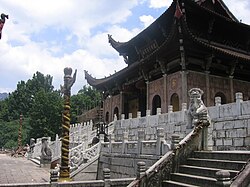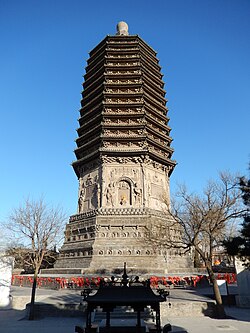
This is a list of Buddhist temples, monasteries, stupas, and pagodas in the People's Republic of China . In this list are Wikipedia articles, sorted by location.
Contents
- Anhui
- Mount Jiuhua
- Beijing
- Chongqing
- Fujian
- Gansu
- Guangdong
- Guizhou
- Hainan
- Hebei
- Henan
- Hubei
- Hunan
- Hong Kong
- Inner Mongolia
- Jiangsu
- Jiangxi
- Jilin
- Liaoning
- Macau
- Ningxia
- Shaanxi
- Shandong
- Shanghai
- Shanxi
- Mount Wutai
- Sichuan
- Mount Emei
- Tianjin
- Tibet Autonomous Region (Xizang)
- Yunnan
- Zhejiang
- Mount Putuo
- See also
- Notes
- External links

















